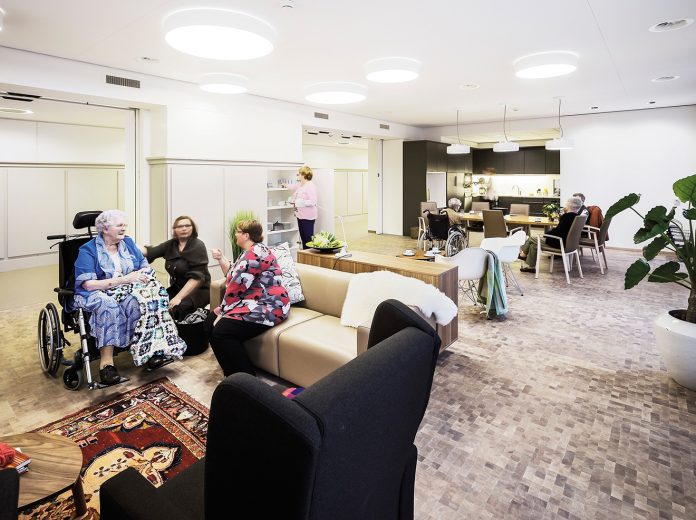As we become older, our hearing is often affected as part of the ageing process and we lose the ability to hear high frequency sounds. Children can typically hear or sense sounds at 20,000 Hz, whereas many people aged 85 cannot hear 8,000 Hz and so have lost a huge part of their range of hearing. In a noisy environment it is difficult to pick out speech and understand conversation; this is isolating, increases anxiety and can become distressing.
For many people with dementia the ability to filter sound disappears. Sound is often experienced as a cacophony of constant background noise to which people are extremely sensitive. Noise has been shown to increase stress levels, anxiety, confusion, blood pressure, heart rate and fatigue. In addition, people with Alzheimer’s disease can experience perceptual problems, which means they can misinterpret some things they see or hear.
However, we must remember that not all sound is ‘bad’; whilst a recent study found a link between high noise levels and ‘unwanted behaviour’ in people with dementia, pleasant sounds were found to be ‘positively stimulating’. It concluded that good acoustics should be ‘one of the key architectural efforts in care environments for people with dementia’. Sounds of nature are often felt to be calming, music is used to aid memory and positively affect mood while ordinary day to day sounds can be used to gives clues to events. For example, the sound of laying the table reminds people that lunch is going to be served.
We can help improve the sound environment by:
- Zoning – keeping unwelcome noise sources as far as possible from quiet areas. Including differentiating between private and public space and keeping them separated.
- Using materials that allow the building envelope (i.e. walls, doors, windows, floors and roof) to block out intrusive external noise especially in quiet rooms and bedrooms.
- Providing a quiet room, with low levels of background noise using sound absorbent products. This will aid relaxation, help hearing and create an enabling environment for people to process information.
- Controlling reverberation (echo) and improving speech clarity with the addition of sound absorbent products especially in communal areas such as lounges and dining rooms.
- Considering and affecting the room acoustic implications of open plan design (as larger open plan spaces are often noisy and allow sound to travel).
- Considering the acoustic implications of furnishing and finishes. Sofas and carpet give a different acoustic ‘feel’ to wood flooring and hard chairs.
- Providing high levels of sound insulation between rooms so that people outside of a room cannot be heard inside a quiet area. It is important in bedrooms that residents are not kept awake by noise from adjacent spaces or that people hear a voice in a corridor and think it is someone in their room. Doors are sometimes a weak point for sound insulation and allow sound to travel. Improving visibility to help people with hearing loss who rely more on visual clues.








